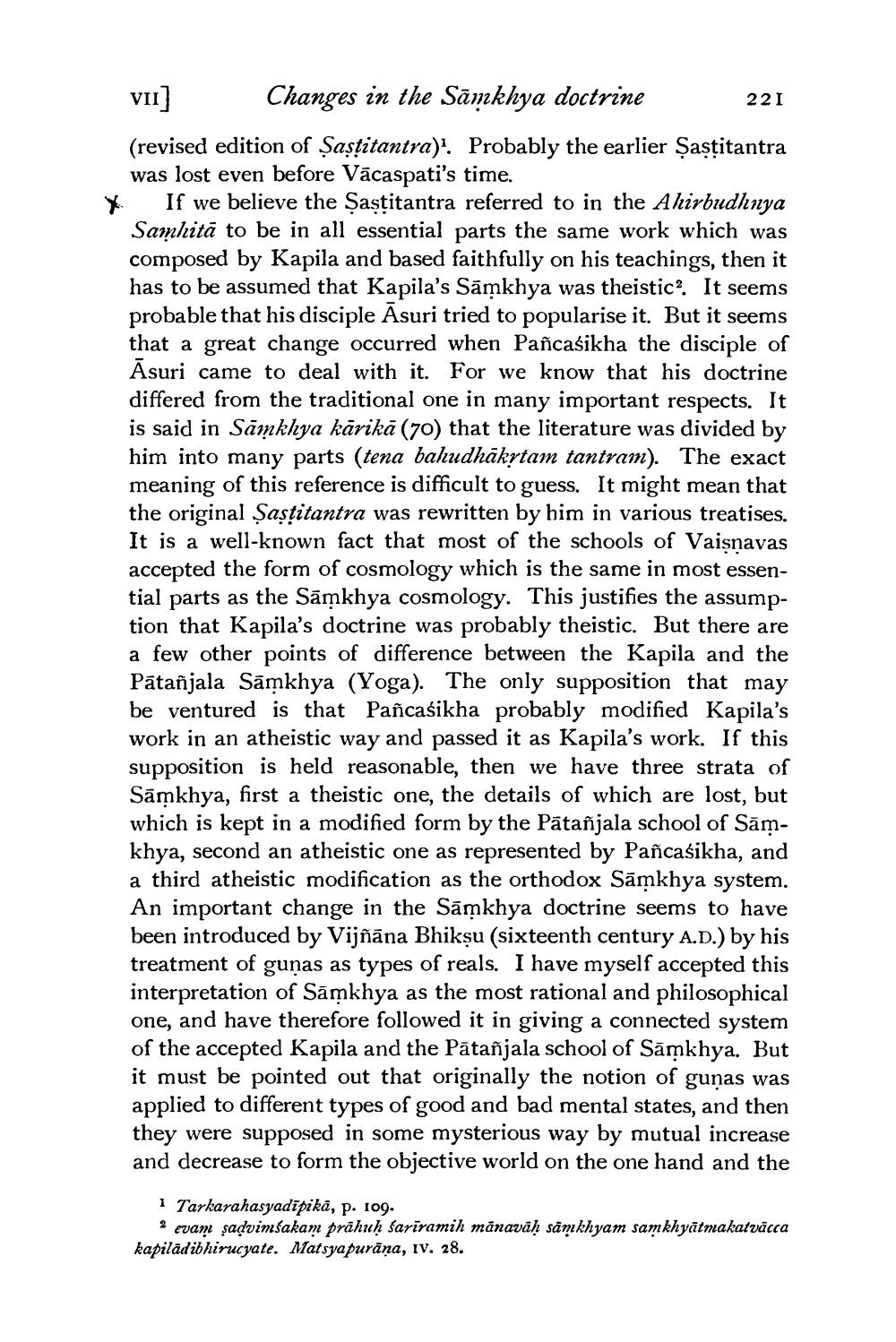________________
VII] Changes in the Sāmkhya doctrine 221 (revised edition of Şastitantra)? Probably the earlier Şasțitantra
was lost even before Vācaspati's time. * If we believe the Şastitantra referred to in the Ahirbudhnya
Samhitā to be in all essential parts the same work which was composed by Kapila and based faithfully on his teachings, then it has to be assumed that Kapila's Sāmkhya was theistic? It seems probable that his disciple Asuri tried to popularise it. But it seems that a great change occurred when Pañcaśikha the disciple of Asuri came to deal with it. For we know that his doctrine differed from the traditional one in many important respects. It is said in Samkhya kārikā (70) that the literature was divided by him into many parts (tena bahudhākytam tantram). The exact meaning of this reference is difficult to guess. It might mean that the original Şastitantra was rewritten by him in various treatises. It is a well-known fact that most of the schools of Vaisnavas accepted the form of cosmology which is the same in most essential parts as the Sāmkhya cosmology. This justifies the assumption that Kapila's doctrine was probably theistic. But there are a few other points of difference between the Kapila and the Pātañjala Sāmkhya (Yoga). The only supposition that may be ventured is that Pañcaśikha probably modified Kapila's work in an atheistic way and passed it as Kapila's work. If this supposition is held reasonable, then we have three strata of Sāmkhya, first a theistic one, the details of which are lost, but which is kept in a modified form by the Patañjala school of Sāmkhya, second an atheistic one as represented by Pañcaśikha, and a third atheistic modification as the orthodox Sāmkhya system. An important change in the Sāmkhya doctrine seems to have been introduced by Vijñāna Bhikṣu (sixteenth century A.D.) by his treatment of guņas as types of reals. I have myself accepted this interpretation of Sāmkhya as the most rational and philosophical one, and have therefore followed it in giving a connected system of the accepted Kapila and the Pātañjala school of Sāmkhya. But it must be pointed out that originally the notion of guņas was applied to different types of good and bad mental states, and then they were supposed in some mysterious way by mutual increase and decrease to form the objective world on the one hand and the
i Tarkarahasyadīpikā, p. 109.
2 evam şadvimsakam prāhuḥ sariramih månavāḥ samkhyam samkhyātmakatvacca kapilădibhirucyate. Matsyapurāna, Iv. 28.




